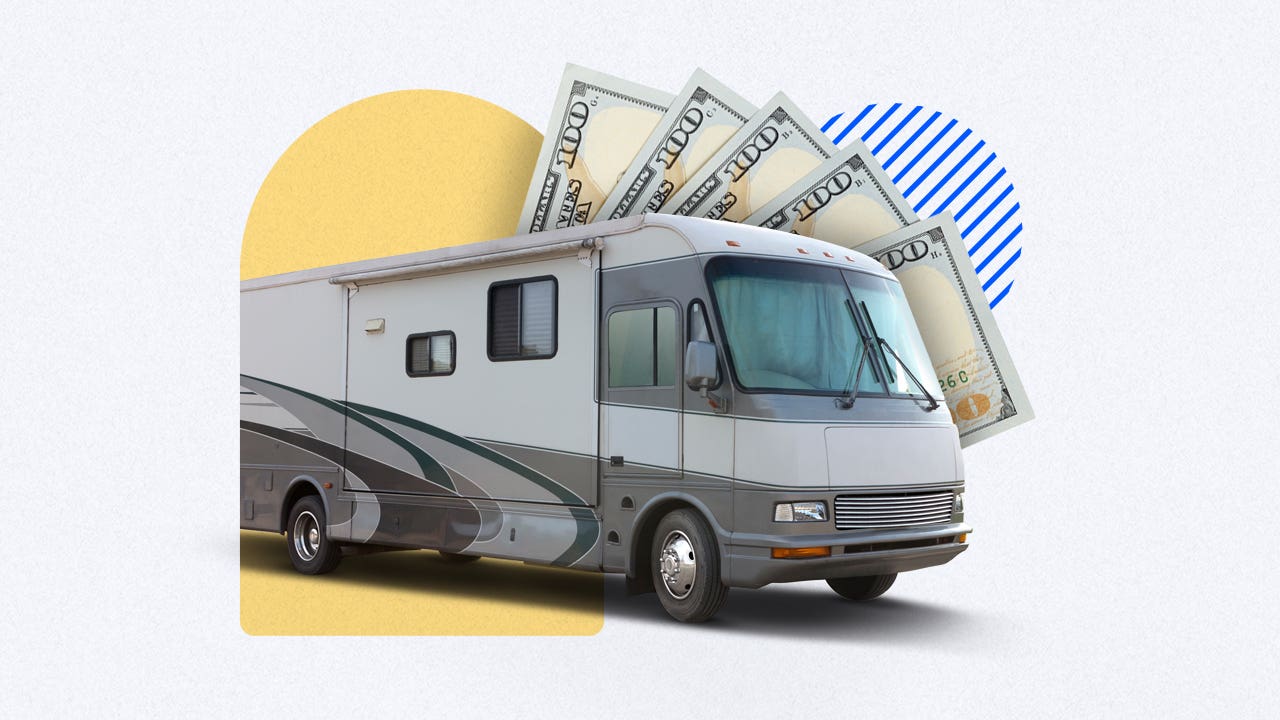How to choose the best RV loan lender for you

Key takeaways
- When gauging approval, RV lenders consider your credit score, income and debt-to-income ratio (DTI), among other factors.
- Get prequalified with the multiple lenders and compare potential offers before applying.
- Find a lender that offers the amount you need at a competitive rate to make the most of your RV financing.
If you’re like most buyers, you will need to finance your recreational vehicle with an RV loan. When comparing your options, be sure to prequalify with at least three lenders to find the most competitive rates and terms for your loan. Take each lender’s requirements into account, then run the numbers for your monthly payment and total cost to be sure you’re getting the best deal.
What to consider before choosing an RV lender
To choose the best financing for your RV, you’ll need to consider the specifics of both the lender and the loan product. Just as you would with an auto loan or personal loan, conduct thorough research to find both the most competitive rates and the lender that best meets your needs.
Also, remember that it may be harder to get an RV loan because it is much larger than other loan types, depending on the model you want and your down payment amount. Typical RV loan terms last five to 15 years, meaning the payment will be part of your monthly budget for the long haul.
Secured vs. unsecured loans
Lenders offer either secured or unsecured loans. With a secured loan, the RV you’re purchasing serves as collateral, so if you default, the lender can seize your RV and resell it to recoup its losses.
Secured loans typically come with lower interest rates. Unsecured loans may have fewer restrictions about how you use the funds – in addition to the reassurance that you won’t automatically lose your RV if you fall behind on payments.
You’ll likely see secured loans offered through dealerships, while most personal lenders offer unsecured loans. Make sure the lenders you consider offer the loan type you prefer.
Common eligibility criteria
To get an RV loan, you’ll need to meet the lender’s eligibility requirements. Each lender sets its own, but typically, your credit score and history, as well as your income and debt-to-income (DTI) ratio, are considered for approval. These factors also impact your loan terms and the rates you’re offered.
The better your credit score, the lower your interest rate will generally be. While bad credit loans exist, these are more likely to come with less flexible repayment terms and high interest rates.
Some lenders don’t extend loans to those who plan to use the RV as a primary residence. If you plan on living in your RV full-time, check with your lender to make sure you still qualify.
Available interest rates
The lowest interest rates disclosed on the lender’s website aren’t guaranteed. Before choosing a lender because of a particularly low annual percentage rate (APR), be sure to prequalify to see your potential rate. Keep in mind that the lowest APR is reserved for the most creditworthy borrowers.
Also, ensure that the interest rate ranges disclosed aren’t promotional or for a set amount of time. Make sure you understand every cost associated with the loan. Look for additional costs like origination fees, late fees and prepayment penalties. Lenders have different fee structures, often based on credit. To better understand rates and fees you could be offered, read the lender’s terms and conditions page or call a customer service representative.
Loan amounts
Before comparing the best RV lenders, it’s important to know how much money you will need to purchase your RV. Recreational vehicles can vary widely in cost, ranging anywhere from $10,000 to $1 million. Most lenders limit what you can borrow, often approving $100,000 personal loans or less, so keep that in mind when setting your budget.
While you can borrow enough to fund future RV expenses, like maintenance costs, storage fees, future upgrades and insurance. However, since these are ongoing costs, it’s better for your finances to budget for them in advance rather than fund them with a loan that you will pay interest.
If financing and paying for future maintenance on an RV would overwhelm your budget, or you find you use it only occasionally, consider renting an RV instead.
Repayment options
The repayment terms you agree to will affect how much your monthly payment impacts your budget — and for how long. Longer repayment terms will mean a lower monthly cost, whereas a shorter repayment period will likely increase your monthly expenses. However, a shorter term means that you’ll pay less interest over the loan’s life, allowing you to own the RV sooner. You can use a personal loan calculator to estimate your monthly payment and long-term cost of owning an RV to get a better idea before you buy.
Customer experience
Depending on your comfort with technology, you might prefer to work with a brick-and-mortar lender with in-person support. If you like to handle your finances online, focus on online loan options. Customer reviews on third-party websites like Trustpilot may also be useful. For most people, it may make sense to prequalify with a variety of lenders to decide which one works best for your needs and budget.
Learn more: Applying for a loan online vs. in person: Which is better?
Perks and special features
When evaluating similar lenders, look out for unique features that may be offered. Here are a few questions to get you started:
- Does the lender restrict what kind or age of RV you can fund with its loans?
- Are there discounts, special programs or other forms of assistance available?
- Do the benefits outweigh the borrowing costs or vice-versa?
Ultimately, you know how much loan you can afford and which RV financing options will work for you. Be sure to compare loan quotes and run the numbers to confirm loan perks aren’t being offered at the expense of a good price.
How to get the best RV loan
You should keep your budget, credit score and lender options in mind when searching for the best RV loan. While there will never be a one-size-fits-all option, you may be able to find a loan that suits your budget and needs with a little extra research.
- Budget: Your current debts and income will play a major role in your budget. When determining how much you can afford, use a personal loan calculator. Be sure to keep in mind how fees might impact your upfront and long-term costs.
- Understand your credit score: Take the time to check your credit score. This way, you can search for and apply to lenders that best match your credit background.
- Apply for prequalification: By prequalifying with a lender, you will have a firm grasp on expected rates and terms — all without damaging your credit. Not all lenders offer prequalification, but =take advantage of this option with the ones that do.
- Compare loan options: Consider borrowing from banks, credit unions and online lenders — but don’t discount dealership financing for larger, more expensive models. Be sure to compare the terms of each option in order to find the best RV loans for your needs.
- Formally apply: Once you find the right lender, be prepared to provide a few required documents for a personal loan, which include personal, financial and tax information to make the application process as smooth as possible.
Bottom line
Choosing the right lender is the first step toward getting out on the open road. To ensure you can enjoy your RV for years to come, pay close attention to details like approval requirements, interest rates, loan amounts, terms, customer service and special features. To confidently select the best RV lender for you, understand your payment obligations and total loan costs. Shop around, get prequalified with multiple lenders and then compare the loan quotes.
You may also like

What are the pros and cons of emergency loans?

Best mortgage lenders of April 2025

How to choose a mortgage lender: 5 tips




